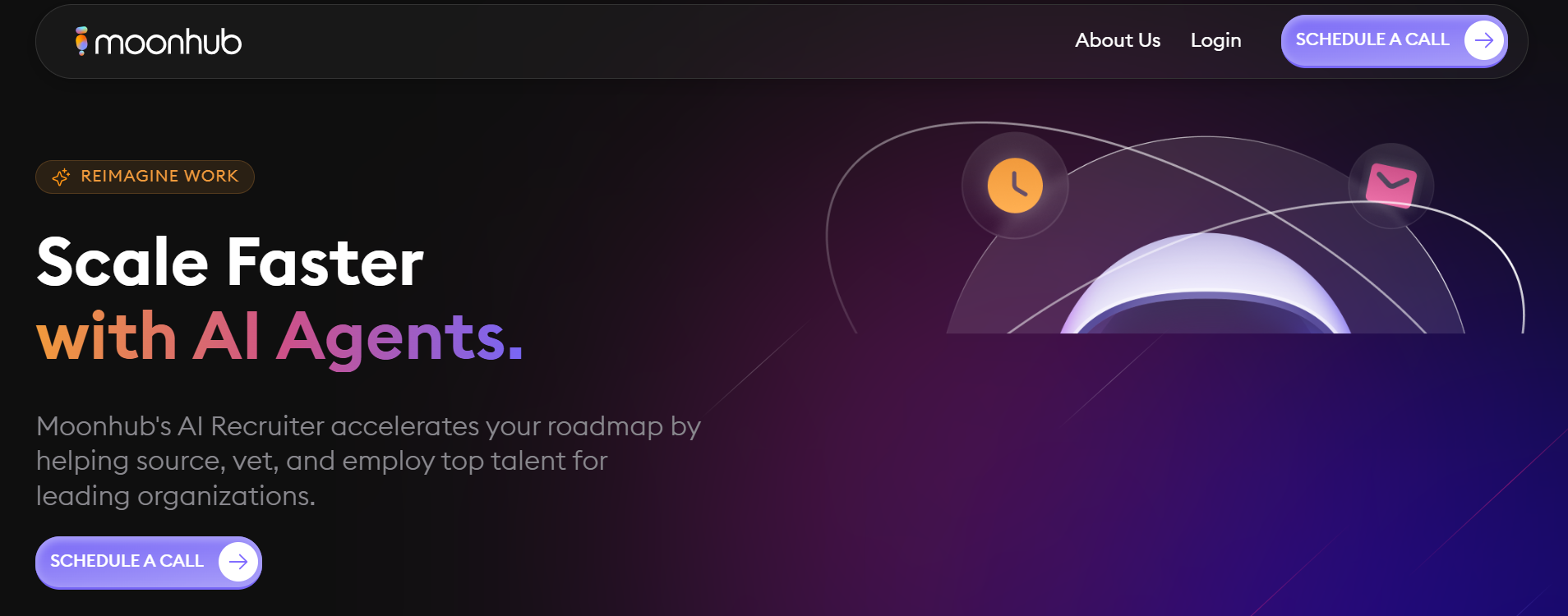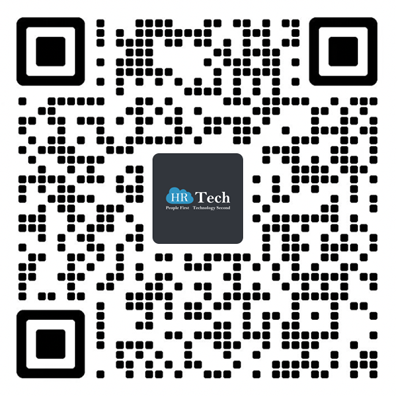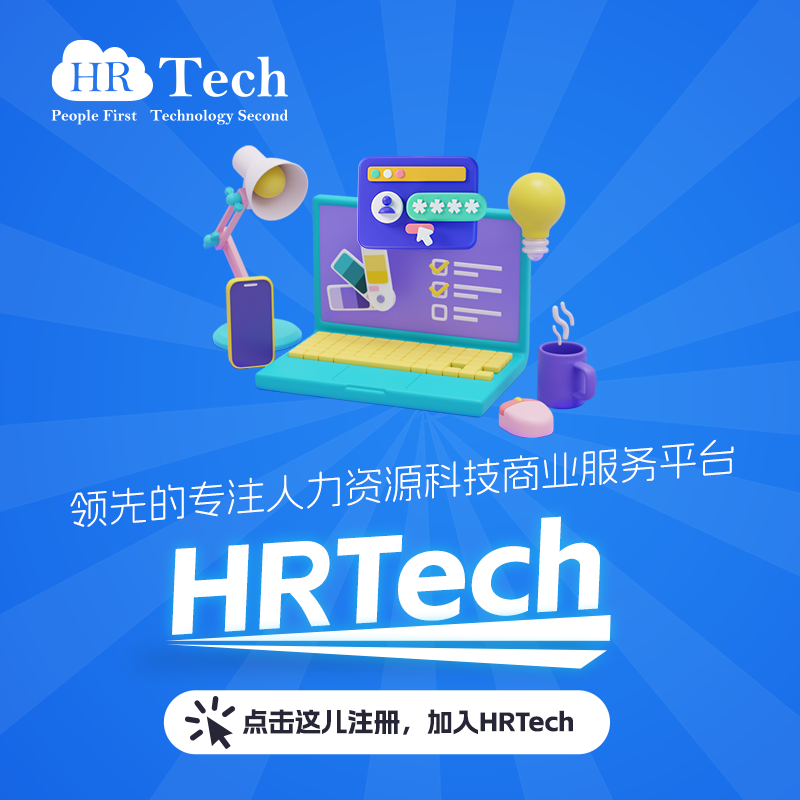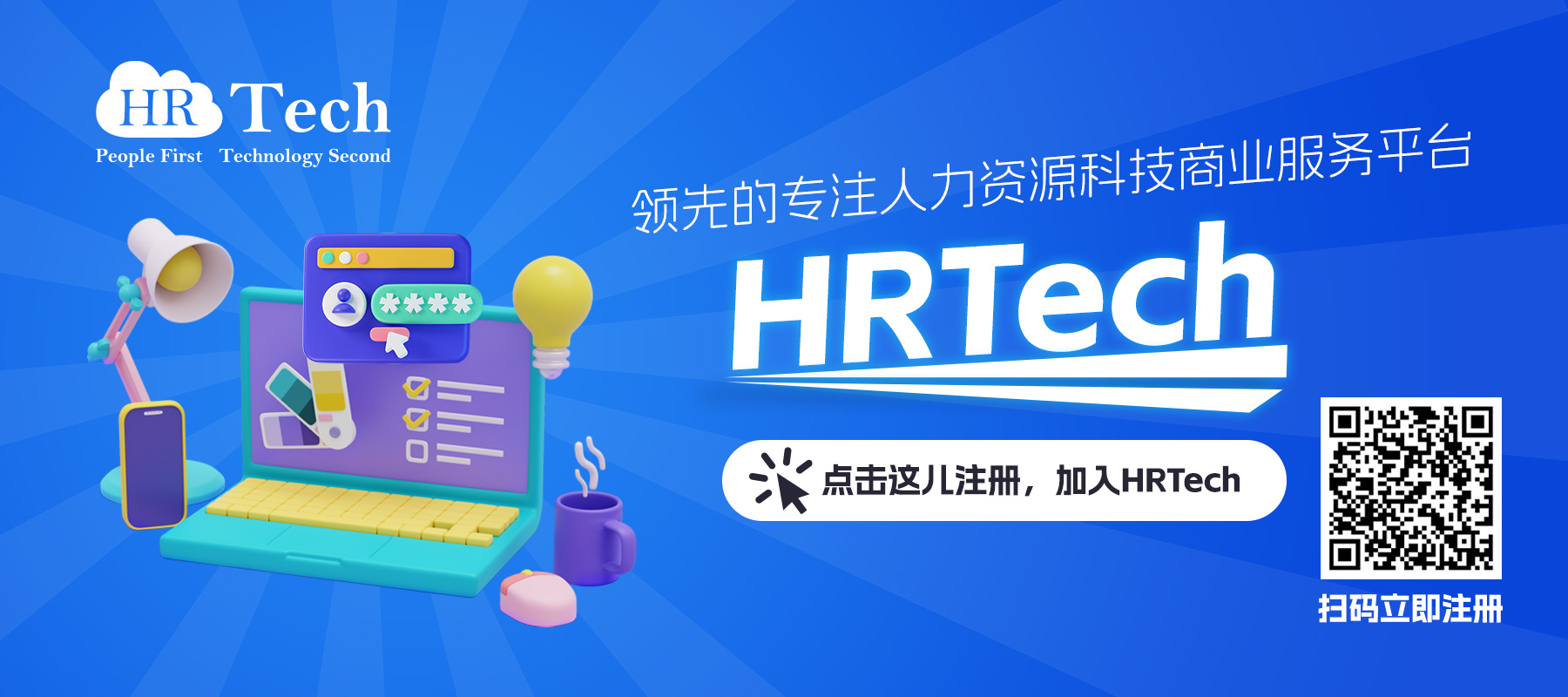-
 资讯
资讯
【上海】HRTechXPO未来论坛11月29日周五在上海举办,前沿专业,未来趋势,大咖云集
2024HRTech XPO 未来论坛 / 2024.11.29
欢迎您关注并参加2024年HRTechXPO超级盛典(未来论坛):
2024年度最引人注目的HRTech盛事已备受行业瞩目,是国内HR科技领域探索2025未来趋势的标志性盛会!
数字化浪潮的推动下,人力资源科技正迎来前所未有的变革。2024年HRTechXPO超级盛典,作为国内HR科技领域的风向标,将汇聚行业精英,共同探讨和展示最新的科技趋势和创新实践。这不仅是一场技术的盛宴,更是一次思想的碰撞,一个展示HR科技前沿成果的绝佳舞台。
随着智能机器人和数字员工的涌现,工作场所的格局正在被重新定义。在这场变革中,HRTechXPO未来论坛将成为连接企业与机构、促进信息共享和互动的重要桥梁。我们诚邀您加入这场盛会,与我们一起探索数智化时代的新机遇。
2024HRTechXPO超级盛典将呈现多元化的内容和丰富多样的形式,集中展示中国企业在HR科技领域的卓越实践,为中国顶尖HR科技思想交流提供了一个高质量的平台。这不仅是展示中国HR科技领域最新成就的窗口,也是提供行业最佳解决方案的舞台。
对于企业决策者和参会嘉宾而言,这是一次难得的机会,可以洞察2025年的科技趋势,体验最新的HR科技产品和服务,制定明智的采购决策,并学习丰富的专业最佳实践。
对于HR科技服务机构来说,这是一次展示自身实力、推广服务、吸引客户、抢占市场先机、树立品牌、提升知名度和美誉度的绝佳机会。
2024年HRTechXPO超级盛典将是一场聚焦人力资源科技最新话题和趋势的盛会。
让您先一步看到未来!这是一个绝佳的年终学习和交流机会,作为优秀HR的你不能错过!
以下是您不能错过的一些精彩内容和主题:
全面员工体验时代:探讨如何通过技术提升员工个性化体验,从而提高组织绩效。
AI在HR领域的应用:讨论人工智能如何优化人力资源管理,包括招聘、员工发展和薪酬福利等方面。
数字化与智能化转型:面对未来,探索HR如何推动组织快速实现数字化和智能化。
全球化挑战:讨论中企出海的人力资源管理,如何规避风险,实现全球布局。
招聘科技:掌握前沿招聘科技工具,提升招聘效率和策略。
人才管理:帮助组织建立面向未来和挑战的人才管理模式。
定制化薪酬福利:探讨如何为每个员工提供定制化的薪酬福利解决方案,以及2025年薪酬预测。
组织学习与发展:讨论企业如何通过组织学习发展提高团队和员工的核心竞争力。
更多精彩话题,等您现场一起来探索~
参加HRTechXPO超级盛典,您将获得:
前沿论坛:专业HRTech未来论坛,探讨行业前沿话题。
把握最新趋势:获取HR科技的最新趋势,保持在行业的最前沿。
规划未来:为2025年的HR数字化转型做好准备,提升组织绩效。
应对挑战:学习在新环境下应对挑战的策略与方法。
从实践中学习:从知名专家和企业的实践中汲取经验,强化自身能力。
体验创新:亲身体验最新的产品和技术,紧跟市场动态。
行业交流:与同行深入交流,加入HRTech互动圈子,拓展人脉。
采购机会:面向2025年度的采购机会,HRTechXPO市场洞察。
珍藏HR科技云图:获得2024年最新版本的HR科技云图,珍贵收藏。
结识影响力人物:有机会与人力资源科技领域的TOP影响力人物建立联系。
更多收益:更多精彩内容,等您亲自揭晓。
超级盛典:2024HRTechXPO未来论坛
时间:2024年11月29日 周五 9:00-17:00
地点:上海 (报名成功后将告知)
报名:http://hrnext.cn/ERgIW1 识别文中图片二维码或文章底部“阅读原文” 进行报名(名额有限,仅限企业HR同仁,提前感受2025全新数字化参会体验)
适合人群:CHRO、CTO、CIO和企业决策者、HRIS、HRSSC、HR总监经理、HR科技服务商和创新机构、顾问和HRTech专家、投资人等
参会咨询
联系人:小科
微信:hrtech-china
邮件联系:hi@hrtechchina.com
在这次盛典中,我们也将隆重颁发2024人力资源科技影响力TOP人物奖项,表彰那些以创新、卓越、领导力和影响力引领人力资源科技领域发展的杰出人物。他们的成就,不仅代表了个人的努力,更是整个行业进步的缩影。
让我们携手先人一步共同探索HRTech领域的2025年,共同书写数智时代的辉煌篇章!
不容错过的2024年HRTechXPO超级盛典,期待您的加入!
也欢迎优秀的HR服务机构参与合作:了解客户需求: 在论坛上与各大HR负责人直接交流,了解他们的需求和挑战。这样的直接反馈将帮助贵司更好地定位和调整产品和服务,以满足客户期望。
建立业务关系: 论坛汇聚了业内领先的HR科技同仁及采购负责人。抓住他们涌向展位的机会,建立有影响力的业务关系,带来合作和商机。
产品展示的舞台:论坛提供了展示贵司的产品和服务的最高舞台。展示贵司的数字化解决方案,潜在客户亲身体验产品及服务,获得HR科技达人第一时间关注。
增加品牌曝光:会前会中会后全网推广合作伙伴品牌增强影响力,让参会HR深深记住。这也是机构塑造数字化品牌的绝佳通道,提升品牌科技属性、提高市场认知度。
行业影响力的提升: HRTech论坛及大奖在业内有着极高的权威及关注度,这有助于巩固贵司在市场上的地位,增加公司的声望,吸引更多潜在客户的关注。
......
联系人:奈斯 获取详细合作方案
微信:hrtechnice
奈斯邮件:nice@hrtechchina.com
-
 资讯
资讯
【罗马尼亚】教育科技初创企业Youni获得90万欧元种子轮融资,用于加强其AI生态系统,将全球大学与学生联系起来
Youni是罗马尼亚一家教育科技初创企业,成立于2018年,通过使用人工智能简化大学招生流程。最近在种子轮融资中筹集了90万欧元,由捷克加速器Soulmates Ventures领投60万欧元,罗马尼亚的Early Game Ventures出资30万欧元。该平台帮助学生申请全球顶尖大学,并为大学提供与合格候选人联系的有效途径。
迄今为止,罗马尼亚初创企业 Youni 已帮助来自世界各地的 6000 多名学生找到并进入了理想的大学。这个由人工智能驱动的全球平台不仅拥有 100% 的申请者录取率,而且还为大学带来了好处,使他们能够招募到高质量的候选人并简化招生团队的工作。该平台为大学提供信息,使其能够更好地规划招生流程,将资源用于成功概率最高的申请人,并更有效地分配奖学金。
Youni 创始人兼首席执行官 Andrei Nicolae 解释说: “我在找大学的时候,并不知道哪个专业最适合我。此外,当时在罗马尼亚无法在线申请大学,所有信息都隐藏在许多不同的平台上,这对我来说既费时又费力。当我在德国从事教育工作时,我看到当地学生也遇到了类似的困难,这就是为什么我决定开发一个智能平台,为所有学生提供普遍帮助"。
Youni 平台在一个地方为学生提供全面支持--帮助他们实现个人和职业发展,最重要的是,为他们进入哈佛大学、剑桥大学或伦敦政治经济学院等世界名校做好准备。每个用户都会创建一份详细的个人资料,列出自己的兴趣、目标、学习成绩和成就。根据这些数据,人工智能算法会推荐合适的学习领域以及提供这些学习领域的大学。
Soulmates Ventures 的创始人兼管理合伙人 Hynek Sochor 说: “对于学生来说,找到合适的学习领域并在高考中取得成功往往非常困难。他们需要全面的信息、指导和支持。我们认为,利用可扩展的现代数字技术来实现这一目的是一个极好的想法,有可能简化学生通往理想职业道路的路径。
在Youni,学生可以使用经过验证的辅导员帮助他们准备标准化考试,如托福、雅思、A Levels/GCSE、SAT或国际高中毕业会考(AA/AI),这些考试通常是录取过程中所必需的。此外,该平台还为用户申请大学和奖学金提供支持。同时,用户还可以咨询教育顾问,他们会为学生的学业之路提供宝贵的建议和指导。
Youni 利用人工智能技术简化了招生流程,使大学从中受益。该平台根据候选人的资料确定最合适的人选,并将他们与大学联系起来,从而减少了招生团队的工作量。Youni 已与德国和瑞士的多所大学合作,以改进其选拔流程。
此外,Youni 还利用人工智能将学生与相关机会(包括大学提供的机会)相匹配,从而帮助学生获得奖学金。这种方法为学生,尤其是贫困学生提供了更多受教育的机会。迄今为止,Youni 已帮助获得了 5200 万美元的奖学金。
有了新的资金,Youni 计划进一步开发其平台,并拓展美国、英国和澳大利亚市场。明年,公司的目标是帮助 100 万名学生进入理想的大学。
-
 资讯
资讯
【德国】智能健身和企业健康公司EGYM获得2亿美元增长融资
EGYM是一家总部位于德国慕尼黑的健身技术和企业健康公司,其成长期融资额约为2亿美元。本轮融资由 L Catterton 和 Meritech Capital 领投。
公司打算利用这笔资金继续扩大其健康网络,并进一步开发数字解决方案、智能力量设备以及用于数据驱动和个性化训练的科技产品。
在首席执行官 Philipp Roesch-Schlanderer 的领导下,EGYM 是一家垂直整合的市场企业,与公司合作,通过提供健身和健康设施来改善员工健康。它还为这些设施配备智能健身器材和数字解决方案,为各种技能水平的人提供人工智能驱动的锻炼体验。
EGYM Wellpass 企业健康网络目前拥有 1.7 万家体育合作伙伴和 1.4 万家企业客户,符合条件的员工超过 300 万。约有 18000 家健身和健康机构使用该公司的产品和服务,其中包括许多全球最大的连锁企业工作室。
今年春季,EGYM 推出了基于人工智能的创新软件 EGYM Genius。它可以创建全自动的个性化训练计划(利用个人的特定生物能力),这些计划与任何健身或健康设施中的所有设备都能精确匹配。
L Catterton 旗舰基金的执行合伙人 Marc Magliacano 是一位拥有 20 多年成功健身投资经验的投资人,他说:"我深信,EGYM 将有助于彻底改变全球健身房的健身方式。EGYM 的技术能够通过前所未有的个性化和测量方法,使健身房对有经验的会员和新会员都更具吸引力和更有效率。
Meritech联合创始人兼合伙人Paul Madera说:"EGYM给我们留下了深刻印象,他们有能力将一个巨大的愿景--一个在早期阶段执行起来特别具有挑战性的愿景--如此成功地推向市场。现在,EGYM 为雇主提供了一个真正由技术驱动的解决方案,在减少病假和医疗成本的同时,提高了员工的健康水平和工作效率。
公司帮助数百万员工创造了更健康的员工群体,提高了员工的健康水平、工作效率、忠诚度和满意度,使雇主能够留住更多的员工。EGYM 在欧洲实现了快速和盈利性增长,并对有机会改变美国健身市场感到兴奋。
EGYM 首席执行官 Philipp Roesch-Schlanderer 表示: “L Catterton 和 Meritech 是我梦寐以求的两位投资人,我们的使命是在健身和健康技术的交叉领域建立全球领先的平台。有了马克和保罗,我们的董事会将拥有更多的健身行业和技术专家。他们与我们有着共同的愿景,那就是将全球最大的市场--医疗保健行业--从维修转向预防。得益于我们的智能技术解决方案和快速发展的国际企业健康平台,我们现在有真正的机会加速这一变革,并且比以往任何时候都更有决心实现这一目标。
关于EGYM
EGYM 由 Philipp Roesch-Schlanderer 创立,其使命是通过先进的数据驱动型健身技术改造医疗保健行业。它的重点是预防慢性病,而不是解决慢性病。该公司提供 EGYM Wellpass 企业健身会员卡,让全球数百万员工都能使用各种健身设施。该公司还在全球各健身俱乐部安装了集成式智能力量设备和软件。
-
 资讯
资讯
【日本】工程师招聘平台lapras获得4亿日元融资,扩大求职支持功能
(株式会社LAPRAS(地址:东京都品川区;代表取缔役:染谷健太郎;以下简称 “LAPRAS”)通过向韩国人力资源技术公司Wanted Lab(以下简称 “Wanted Lab”)的日本子公司WANTED JAPAN KK(以下简称 “WANTED JAPAN KK”)进行第三方新股配售,募集了总计约4亿日元的资金。 此外,公司还从金融机构筹集了总计约 4 亿日元的资金。 融资总额达到约 12 亿日元。
公司筹集的资金将用于加强产品开发、扩大市场营销和销售结构,以及发展连接高技能 IT 工程师和企业的职位变更和招聘平台 LAPRAS 的业务。 通过这些活动,LAPRAS 将从日本和韩国开始,促进招聘代理人工智能的引进,并提供跨国招聘和转职机会。
LAPRAS 自 2019 年起开始提供连接高技能 IT 工程师和企业的转职与招聘平台 LAPRAS。 目前,注册用户数量已达到约 35,000 人,使用 LAPRAS SCOUT 招聘服务的企业数量已超过 1,000 家。 2024 年 2 月推出的只发布招聘信息的计划 “LAPRAS JOB BOARD 计划”,前 6 个月约有 200 家企业使用,截至 2024 年 7 月,在 LAPRAS 上发布的招聘信息数量同比增长 150%以上,面试数量同比增长 200%以上,大大提高了匹配机会。
LAPRAS 将进一步扩大其在评分和人工智能评论生成方面的现有优势,为用户创造令人高度满意和信服的求职体验。 我们已经在试用一项功能,它允许人工智能根据用户的喜好和经验,以个性化的理由为其推荐工作,并为其创建工作摘要。 这消除了传统职位建议和推荐功能的不透明性和随意性,提供了更有说服力的换工作体验。
LAPRAS 将原来面向企业客户的招聘服务 “LAPRAS SCOUT ”的名称统一为 “LAPRAS”,并根据企业的需求制定各种计划。 许多使用 LAPRAS 的企业正在引进运营代理(BPaaS 型)计划,该计划允许企业将招聘活动的一部分外包。 通过扩大该计划并加强对企业招聘的支持,我们将消除依赖于企业资源和专业技能的传统侦察型招聘(直接招聘)所造成的机会损失。 新的服务名称将从 2024 年 10 月起逐步启用。
通过与韩国人力资源技术公司 Wanted Lab 及其日本子公司 WANTED JAPAN 的合作,将启动一项新业务,为来自韩国的高技能 IT 工程师与日本公司牵线搭桥。 由于日本 IT 工程师短缺,而且越来越多的公司希望在全球范围内拓展业务,许多 IT 公司和初创企业正在将其开发组织全球化。
韩国的许多 IT 工程师技术精湛、经验丰富,能够使用英语和日语等语言。 另一方面,与日本相比,韩国并不存在严重的劳动力短缺问题,而且招聘是买方市场,日本公司比韩国更容易招聘到优秀的 IT 工程师。 LAPRAS 将为寻找此类高技能 IT 工程师的企业与来自韩国的优秀 IT 工程师牵线搭桥,既可以通过移民到日本的就业方式,也可以利用 EOR(记录雇主)服务进行跨境全远程工作。
今后,LAPRAS 将与各方合作,通过利用全球资源来帮助解决日本 IT 工程师短缺的问题,并为日本 IT 工程师提供到海外工作的机会。 作为第一步,LAPRAS 将进军韩国 IT 工程师招聘市场,以提高日本企业的竞争力,并为韩国 IT 工程师提供新的机会,从而为两国的经济增长和创造良好的工作社会做出贡献。
Wanted Lab 公司总裁 Lee Bok-ki 先生说到:“LAPRAS 通过其基于技术的招聘服务 LAPRAS Score 彻底改变了以猎头为中心的日本招聘市场,我们相信,通过将旺旺在招聘市场洞察力、运营经验、人工智能技术和商业模式方面的优势结合起来,我们将取得最大的成果。通过此次投资建立更紧密的合作关系,我们期待着为日本招聘市场带来变革,创造更多商机。
LAPRAS K.K.首席执行官染谷健太郎说到:“我们很高兴地宣布募资完成。去年 11 月,我们与加入我们股东行列的 Wanted 开始了业务合作。 通过加强这一全球合作伙伴关系,我们将实现两家公司的共同愿景,实现业务的进一步增长。日本的人力资源领域仍然面临着许多挑战,对现有工作不满意或想跳槽的人数在增加,而跳槽或寻找新工作的人数却没有增加。 为了解决这些问题,LAPRAS 将继续接受各种挑战,在坚持'相信人的潜力'这一核心价值的同时,创造出让用户满意的更好的匹配"。
关于LAPRAS
LAPRAS 提供了一个连接工程师和公司的职业匹配平台。工程师可以通过爬虫技术和机器学习分析自动生成个人简介。LAPRAS 对技术信息和方向进行客观分析,并以组合形式提供,因此无需额外的负担或准备。LAPRAS 利用机器学习技术对技能和偏好进行客观分析。他们的数据来源广泛,包括技术信息共享服务和社交网站。
-
 资讯
资讯
Josh Bersin谈:ADP Lyric HCM,众人期待的下一代HR平台
前沿:在2018年,ADP启动了一个旨在彻底改变企业人力资源和薪资管理的项目,名为Lyric HCM。该系统采用灵活的可扩展架构,支持各种员工类型和多管理结构。Lyric HCM结合了AI工具,如ADP Assist,为全球薪资和人才管理提供了全新的解决方案。它拥有实时基准和个性化用户体验,适用于零售、医疗保健等行业,成为了Workday和SAP等主要HCM供应商的有力竞争者。
在2018年春天,Josh Bersin 参加了一个在纽约市举行的保密会议,了解一个名为Lifion的项目。ADP雇佣了一支新的工程团队,秘密进行任务,为ADP在企业市场中的产品打造“下一代平台”。
该系统的设计始于Workday发布的十年后,旨在成为一个高度可扩展、可配置的微服务架构系统,能够管理工资、HR流程以及各类员工的所有人才应用。该系统必须支持动态团队、各种工作模式(全职、兼职、小时工、零工、合同工),并允许公司在其企业职能中管理许多具有不同业务规则和重叠员工的组织结构。
在某种意义上,它是为后疫情时代高度灵活、动态的公司设计的。
除了这种灵活的架构外,系统还设计为支持拥有多个经理(以及多个工时表)的员工,动态重新配置以适应并购或新业务实体,以及全球工资和税务服务,具有公司内可变的自定义业务规则。它需要包括一个招聘模块、目标和绩效管理的多种选择、入职和培训发展工具、出色的报告功能,以及一个易于使用的叙事界面,允许任何员工、经理或HR专业人士使用、配置或在系统上运行报表。
在我最初的会议上,我印象深刻,并且我写了一篇文章描述这个项目。今天,几乎六年后,该产品有了一个名称(ADP Lyric HCM),并已向拥有1000多个客户账户的ADP客户全面开放。
如今,ADP拥有120多个大型客户账户,因此该系统已被验证。自成立以来,Lyric HCM已融合了大量AI功能(ADP Assist与SAP Joule一样,是真正的AI界面),并且从ADP的数据云中获得了基准信息。
换句话说,该系统有潜力成为市场上的“下一代”HCM平台。
ADP在宣布什么及提供什么
核心HR系统需要执行很多任务。不仅要管理工资、福利和税务规则(在全球不断变化的监管环境下),它还必须灵活、易于配置,并且充满员工和HR易于使用的界面。通过“灵活”我指的是系统必须能够轻松创建新的组织结构,移动员工,并为“经理”或主管创建多种模式。
几乎所有传统的HCM供应商,Workday、Oracle和SAP,都不是以这种方式设计的。这些供应商构建了合同工附加功能,但在大多数情况下,当你想要简化组织结构、与另一家公司合并或重组角色时,过程非常困难。简化组织通常意味着“重新实施”你的HRMS。大多数公司每十年才这样做一次。
ADP Lyric HCM旨在解决这个问题。想象一下像Gold’s Gym这样的公司,公司不断开设新健身房并雇佣新经理,员工同时向多个经理报告。
我与Gold’s Gym进行了交谈,正如你所想,公司在疫情期间经历了一次转型。Gold’s最初是南加州的健身公司,Gold’s被收购,现在是一个全球组织,扩展到许多新业务。设施被整合,每个本地健身中心都具有很大的管理自主权。
例如,一个在一个健身房担任教练的员工可能还在另一家健身房担任教练或支持人员,并且有另一个经理。这种“以工作为中心”(而非“以职位为中心”)的操作模式变得非常普遍。Lyric HCM支持这些多管理模式的工作模型,包括绩效管理、时间追踪和合同工的功能。
想一想任何零售商、医疗公司或其他高度分散的运营。一个Gold’s Gym可能以一种方式支付加班费,而另一个可能以不同的方式支付。你可以想象各种情况。每个公司都有类似的情况。
我最近在Rolls-Royce,他们正在将工程团队从产品组中集中起来,使30%至40%的工程师成为“浮动人员”。Rolls拥有与政府和商业客户的大量合同,每个合同都有不同的财务模型。他们需要这样的系统,就像健身房、餐饮连锁或老年护理网络一样。
还有更多。除了这些HRMS和全球薪资功能之外,ADP还构建了一个员工体验平台、员工通讯系统和学习与发展系统。你只需输入像“我要结婚”这样的查询,系统就会显示一个页面,将任务和资源整合在一个地方。如果HR经理想要“发放奖金”,系统会询问哪个组织,显示人员名单,并允许经理定义奖金,而不必四处寻找菜单和面板。
下一代方法的亮点
由于该系统是在AI时代架构的,它从一开始就具有一些非常独特的功能。
首先,在灵活性方面,这是一个“以人为中心”的架构,而不是“以角色为中心”的架构。仅此一项功能就使所有这些特性成为可能。
其次,在可用性方面,该系统是我见过的最“AI驱动”的界面之一。虽然大多数HCM都在构建助手以加速交易流程,但Lyric HCM实际上会“学习”你正在尝试做的事情,并通过流程提示你。请记住,这些HCM系统非常复杂(Workday的“用户指南”有2500页),因此我们希望系统感觉易于接近而不是令人生畏。
正如您从此幻灯片中看到的,ADP还提供嵌入式基准以及提醒引擎。基准来自ADP的数据云,为公司提供最新的按职位和级别划分的薪资范围和其他指标(其他HCM平台没有这个功能)。提醒引擎用于Lyric HCM的入职和发展系统,提醒用户他们需要执行的任务或活动。
ADP Assist是该公司的生成式AI工具,允许你询问任何员工或团体、法律和税务问题以及工资或财务数据。它非常强大,我认为它可以与Joule媲美,成为HCM的会话界面。
第三,该系统为员工提供了一个新颖且易于使用的界面。系统不会向员工提供各种“中心”或“门户”来查找内容,而是足够智能地为员工提供它认为他们需要的内容。像更改家庭状况或地址、查看福利或薪酬等典型的HR事务都很简单。面向薪资或税务经理的基于角色的仪表板也经过了专门设计。任何HR专业人士都可以根据自己的需要自定义界面。
由于系统高度动态,用户可以设置智能报表和其他视图,以查找他们感兴趣的数据和组织单元。ADP还构建了一个管理人员发展工具(用于指导新晋升的主管发展),一个入职系统,以及许多用于绩效和目标管理的功能。
未来方向:ADP服务
当我们考虑ADP的平台时,我们必须记住,ADP不仅仅是一家云软件公司。公司的大部分收入来自服务:工资、PEO和围绕这些产品的许可费用。这意味着ADP的销售和服务组织非常以服务为中心,并且在HR的各个领域都经过了高度培训。(大多数HR软件销售团队并不是HR领域的专家。)
为了支持Lyric HCM,公司组建了一支全球服务团队,并结合了专门的客户成功经理,以确保每个客户都有一个个性化的、以成果为基础的实施计划。这意味着ADP Lyric HCM不仅仅是一个出色的平台,还是一群人帮助进行配置、利用、集成和长期规划。ADP正开始与集成商合作,但很可能会自己处理大多数客户实施。
对市场的影响
目前,Lyric HCM定位为面向美国总部的全球劳动力中型至大型公司的产品。这意味着Lyric HCM直接与UKG、Ceridian、Workday、Oracle、SAP以及像Darwinbox、HiBob(正在上移市场)、Lattice等供应商竞争。“支付”类公司(如Paychex、Paycor、Paycom)主要专注于小型公司,但随着它们的发展,它们可能也会成为竞争对手。
这并不意味着ADP能够满足每个客户的需求。这些平台需要多年才能成熟,每个供应商都有不同的行业和重点功能。目前,我相信ADP最有可能在零售、酒店、医疗保健和其他分散的小时工公司中取胜。鉴于ADP对中小型企业的关注,ADP需要时间才能接触到大型公司。
尽管如此,是时候改变HCM了。为灵活性而设计,并融合AI,ADP Lyric HCM展示了我们一直在寻找的未来。
-
 资讯
资讯
【美国】记录雇主服务公司Wrapbook以7.5亿美元估值获得2000万美元融资
将娱乐薪资和制作会计现代化的记录雇主服务公司 Wrapbook 宣布获得 Bessemer Venture Partners 2000 万美元的投资,公司估值达 7.5 亿美元。此外,双方还启动了二次要约收购,允许符合条件的* Wrapbook 员工出售部分股权。通过此次交易,Wrapbook 对其员工为电影业做出的贡献给予了肯定。
Wrapbook 通过以下方式加快电影财务和制片会计团队的工作流程:
加快速度和效率: 使制片财务团队能够利用他们可以信赖的数字进行实时操作。
提升协作: 将所有团队汇集到一个系统中,为一个共同的目标而努力,即在符合预算的情况下完成制作。
更快做出更好的决策: 通过 NextGen 报告和仪表板了解所有项目、实体、部门和工作人员的情况。
在一个面临预算紧缩、生产停顿和复杂财务管理的行业中,Wrapbook 已成为团队更快、更可靠地完成更多工作的关键解决方案。“Wrapbook 首席执行官阿里-贾维德(Ali Javid)说:"对于财务主管、制片会计和制片人来说,Wrapbook 是一个倍增器。“我们的平台和提升服务模式使这些重要的团队成员能够高效地管理复杂的流程,并为制作的成功做出更具战略性的贡献。
Bessemer Venture Partners合伙人Mary D'Onofrio补充说:"Wrapbook的技术从根本上提高了制作财务团队的能力和影响力。我们多年来一直在寻求这项投资,因为我们认识到它具有重塑娱乐财务的潜力。
“Wrapbook 联合创始人卡梅隆-伍德沃德(Cameron Woodward)说:"在客户和业界的支持下,我们正在打造一种全新的、更好的制片财务管理方式。
Wrapbook 感谢那些推动 Wrapbook 成为行业新标准的人们:
- 1,000 多家公司使用 Wrapbook
- 去年有 4 家工作室签约使用 Wrapbook 制作节目
- 175,000 多名员工创建了数字档案,并通过该档案获得报酬
- 包括 CAA 和 WME 在内的 40 多家艺人经纪公司为其艺人建立了个人档案
- 年收入增长 50
这些数字反映的不仅仅是增长--它们代表了行业向更高效、更透明、更强大的财务工具转变,适用于各种规模的制作。
关于Wrapbook
Wrapbook 是一个智能制作工资和成本跟踪平台,它将整个团队--会计、制作、演员和工作人员--连接在一个简单易用的界面上。有了 Wrapbook,公司可以一键支付工人工资、实时跟踪开支并按需生成工资报告,而工人则可以在任何设备上提交考勤卡并跟踪工资。任何设备上提交考勤卡并跟踪薪酬。通过智能入职、自动时间卡和内置的工会合规性,Wrapbook 使工资单变得更简单、更快捷、更安全。
-
 资讯
资讯
【加拿大】医疗保健劳动力自动化平台Arya Health获得400万美元种子轮融资,旨在利用AI改造医疗保健人力资本管理
医疗保健劳动力自动化平台先驱 Arya Health 宣布完成由 Twelve Below 领投的 400 万美元种子轮融资。这笔投资将推动 Arya Health 通过创新的人工智能和自动化技术彻底改变医疗保健行业劳动力管理的使命。
在过去的12个月里,Arya Health经历了强劲的市场需求,收入增长了6倍多。迄今为止,公司已经推出了四项关键 “技能”,将医疗服务机构中传统上需要大量人工干预的任务自动化,如日程安排、复杂的薪资计算、员工入职和持续合规。
“Arya Health 首席执行官库纳尔-萨尔达(Kunal Sarda)说:"我们很高兴在继续创新和扩展平台的过程中得到 Twelve Below 的支持。“这笔资金让我们能够进一步实现我们的愿景,即为医疗机构提供不仅能简化运营,还能提高员工参与度和留任率的工具。
Arya Health 的客户 Thrive Skilled Pediatric Care 公司首席执行官 Melinda Phillips 分享了她的经验: “家庭医疗运营商一直在寻找既能吸引、管理和留住外勤人员,又能改善成本结构的方法。我尝试过许多不同的产品,但没有一个能提供我所渴望的功能,直到我们遇到了 Arya 的劳动力管理自动化产品。
在其他地方,使用 Arya Health 平台的领先远程医疗提供商已经报告了显著的成果:
临床覆盖率提高了 43%,工作时间减少了 30
缩短了 56% 的轮班时间
完全自动化的持续临床医生调度和出诊管理
此次融资正值Klarna等技术领先企业宣布计划从传统的人力资源系统转向构建自己的人工智能驱动的人力资本管理工作流程的关键时刻。这一趋势凸显了人们对可定制、自动化优先的解决方案的需求日益增长--Arya Health 在这一领域具有独特的领导地位,首先从医疗保健领域开始。
“Twelve Below 公司合伙人 Byron Ling 说:"医疗保健行业正在经历一场重大变革,而高效的劳动力管理是这场变革的核心。“Arya Health 采用人工智能原生、模块化的方法来构建高度可定制的人力资本管理技能,这使他们在这个快速发展的领域中脱颖而出。
关于 Arya Health
ARYA Health 是一家位于温哥华的 Saas 公司,为加拿大医生和专职医疗人员提供临床、企业软件解决方案(电子病历)。我们的团队由来自加拿大各地的 15 多名临床医生、开发人员和业务领导组成。我们的特色产品 Arya EHR 于 2020 年 1 月推出。这是一款基于在线的直观医疗记录软件,医生和临床医师可在诊室中使用该软件记录、分类和调用患者的健康信息。Arya EHR 既可用于医生个人诊所,也可用于大型医院,如皇家哥伦布医院的心脏病诊所。与去年同期相比,我们的诊所基础增长了 257%,用户基础增长了 328%(截至 2021 年 8 月)。我们的远程医疗和虚拟功能的需求不断增加,通过公司网站和 LinkedIn 公司简介找到我们的客户源源不断。
-
 资讯
资讯
现代工作管理企业平台Smartsheet将被Blackstone和Vista Equity Partners以84亿美元收购
现代工作管理的企业平台 Smartsheet(纽约证券交易所代码:SMAR)(以下简称 “Smartsheet ”或 “公司”)宣布已就由 Blackstone 和 Vista Equity Partners 管理的基金(以下简称 “买方”)在一项价值约 84 亿美元的全现金交易中收购 Smartsheet 事宜达成最终协议。
根据协议条款,在拟议交易完成时,买方将以每股 56.50 美元的现金收购 Smartsheet 股东持有的所有流通股。这一价格比截至 2024 年 7 月 17 日的 90 个交易日中 Smartsheet 股票的成交量加权平均收盘价溢价约 41%,而截至 2024 年 7 月 17 日的过去 12 个月中 Smartsheet 股票的最高收盘价溢价 16%。
“十多年来,我们建立了一个由员工、合作伙伴和客户组成的蓬勃发展的社区,每个人都专注于建立并受益于 Smartsheet 行业领先的工作管理平台。我们下一阶段的增长和客户成功正在进行中,我们期待与 Blackstone 和 Vista Equity Partners 合作,加速实现我们在全球范围内为企业实现工作管理现代化的愿景,"Smartsheet 首席执行官 Mark Mader 说道。“这项交易证明了我们的员工在服务客户和合作伙伴以及打造企业级市场领先平台方面所做的杰出工作。展望未来,我们相信,Blackstone 和 Vista 的专业知识和资源将帮助我们确保 Smartsheet 继续成为员工茁壮成长的理想工作场所,同时推动创新并为客户和利益相关者带来更大的价值"。
Blackstone 北美私募股权投资部主管兼技术投资部全球联席主管 Martin Brand 及 Blackstone 资深常务董事 Sachin Bavishi 表示:"在日益分布式、跨职能和全球化的工作团队中,Smartsheet 创新且市场领先的解决方案在帮助团队大规模协作以取得卓越成果方面起着至关重要的作用。我们很高兴能与 Smartsheet 的管理团队合作,利用我们及合作伙伴 Vista 的综合规模和资源,加快对下一代工作管理解决方案的投资,从而推动长期增长。Blackstone 将通过其旗舰私募股权投资工具及其面向个人投资者的私募股权投资策略投资 Smartsheet。
“Vista 旗舰基金联席主管兼资深常务董事 Monti Saroya 及 Vista 常务董事 John Stalder 表示:"现代企业每天都依赖 Smartsheet 简单且可扩展的解决方案来管理各种关键业务流程。“我们期待与 Blackstone 及 Smartsheet 密切合作,支持其雄心勃勃的目标,即让每个依靠协同工作取得成功的组织、团队和员工都能使用其平台。 Vista 是一家全球领先的投资公司,专注于企业软件、数据和技术驱动型企业。
其他交易条款
本次交易的合并协议包括 45 天的 “go-shop ”期,将于 2024 年 11 月 8 日到期。在此期间,Smartsheet 及其顾问将被允许向某些第三方积极征集备选收购方案,并有可能与提出备选收购方案的其他各方进行谈判。根据合并协议的条款和条件,Smartsheet 董事会将有权终止合并协议以接受更优方案。无法保证这一 “go-shop ”过程是否会产生更优方案,Smartsheet 不打算披露相关进展,除非并直至其确定披露是适当的或有其他要求。
目前预计该交易将在截至 2025 年 1 月 31 日的 Smartsheet 财年第四季度完成,但需获得 Smartsheet 股东的批准、满足必要的监管许可和其他惯例成交条件。Smartsheet 董事会一致批准了合并协议,并建议 Smartsheet 股东在就交易进行投票的股东特别大会上投票支持交易。
交易完成后,Smartsheet 的 A 类普通股将不再在任何公开市场上市,Smartsheet 将成为一家私有公司。公司将继续以 Smartsheet 的名称和品牌运营。
顾问
Qatalyst Partners 担任 Smartsheet 的独家财务顾问。Fenwick & West LLP 担任 Smartsheet 的法律顾问。
高盛公司(Goldman Sachs & Co. LLC 和 Morgan Stanley & Co. LLC 担任财务顾问,Kirkland & Ellis LLP 和 Simpson Thacher & Bartlett LLP 担任 Blackstone 和 Vista Equity Partners 的法律顾问。
关于 Smartsheet
Smartsheet 是现代企业工作管理平台,深受全球数百万公司员工的信赖,其中包括约 85% 的 2024 年财富 500 强公司。作为该领域的先驱和市场领导者,Smartsheet提供功能强大的解决方案,助力业绩提升并推动下一波创新浪潮。
关于 Blackstone
Blackstone 是全球最大的另类资产管理公司。我们致力于通过加强所投资公司的实力,为机构和个人投资者带来令人瞩目的回报。我们管理着超过 1 万亿美元的资产,包括专注于房地产、私募股权投资、基础设施、生命科学、成长型股权投资、信贷、实物资产、二级市场及对冲基金的全球投资策略。
关于 Vista Equity Partners
Vista 是一家全球领先的投资公司,截至 2024 年 3 月 31 日,管理资产超过 1000 亿美元。该公司通过私募股权、永久资本、信贷和公开股权战略,专门投资于企业软件、数据和技术驱动型组织,其投资方法以创造持久的市场价值为优先考虑,为其全球生态系统的投资者、公司、客户和员工谋福利。Vista 的投资以可观的长期资本基础、构建技术导向型交易的经验以及推动可持续增长的成熟、灵活的管理技术为依托。Vista 相信技术的变革力量是创造更美好未来的关键--更健康的地球、更智能的经济、多元化和包容性的社区以及更广阔的繁荣之路。
-
 资讯
资讯
【米兰】薪资管理平台Jet HR获得1200万欧元种子轮融资,用于消除与工资单有关的官僚作风
Jet HR 是一家由 Marco Ogliengo 和 Francesco Scalambrino 创办的初创公司,旨在消除意大利公司在薪资、人力资源和一般运营方面的官僚作风,公司在成立一年后吸引了 1200 万欧元的种子轮融资,使融资总额达到 1670 万欧元。领投方是风险投资公司 Picus Capital。现有投资者 Exor Ventures、Italian Founders Fund 和 2100 Ventures 通过增持股份参与了本轮融资。
此外,Diego Piacentini、全球最大人力资源公司Workday前首席技术官David Clarke、Oyster HR(全球薪资领域独角兽)创始人Tony Jamous和法国会计独角兽Pennylane创始人Felix Blossier等人也参与了投资。Jet HR 的股东还包括意大利最成功的科技企业家(他们直接或通过 IFF 进行投资)以及贝纳通、贝卢斯科尼和莫拉蒂等一些最大的工业家族。
Picus Capital 创始合伙人兼董事总经理Robin Godenrath说: “我们很高兴能支持 Marco、Francesco 和整个 JetHR 团队彻底改变意大利的薪酬制度。意大利复杂的薪资管理条例、成熟的顾问网络和古板的客户互动方式为 JetHR 的创新和数字化方法提供了理想的基础。该团队的产品迭代速度和早期表现出的卓越商业吸引力尤其给我们留下了深刻印象。我们看到了人工智能驱动的自动化在改变意大利 40 亿欧元薪资市场方面的巨大潜力,因为目前的薪资市场依赖于服务型解决方案,我们很高兴能继续支持 JetHR 开拓人工智能薪资解决方案的未来。
Jet HR 解决了企业在与官僚机构冲突中遇到的挫折。它提供了一个技术平台,并配备了经授权的专业薪资顾问。Jet HR 不仅能实现薪资自动化(处理薪资、招聘及相关事宜),还能快速处理邻近的行政任务。数百名满意的客户对以下方面表示赞赏:工资成本突然变得清晰明了,建立有效合同和聘用员工变得容易,费用报告和合同不再需要纸张,自动适用减税政策节省了资金。这些都是这一模式成功背后的主要因素,也是说服众多创新者在 2023 年 6 月创纪录的种子轮前投资的原因。
经过短短 12 个月的运营,市场对更简便、高效地解决员工管理诸多复杂问题的强烈需求显而易见:300 多家客户公司,包括传统中小企业、初创企业、跨国公司,甚至像 HelloFresh 和 Octopus Energy 这样的上市公司。Jet HR 在全球发展最快的 Saas(软件即服务)公司中名列前茅。
募集到的资金将用于壮大团队,公司目前有 70 名员工,大部分用于研发。即将推出的功能包括承包商管理,允许公司快速支付承包商和员工的工资,并全面了解员工总数和相关成本。
Jet HR 首席执行官 Marco Ogliengo 评论说: “很明显,我们走在了正确的道路上:不仅有数百家满意的客户和杰出的意大利投资者,我们现在还得到了像 Picus Capital 这样的国际基金的信任。Picus 非常了解我们的行业,曾投资过多家薪资和人力资源公司,这些公司后来都成为了'独角兽'。他们看到了我们的潜力,我们很高兴与他们合作并向他们学习。拥有强大的经济对我国的未来至关重要。在投资者的支持下,我们的贡献将是把企业从不必要的官僚主义中解放出来,使它们能够加速发展"。
Jet HR 的联合创始人兼产品负责人 Francesco Scalambrino 补充说:"在第一年的胜利中,我认为最重要的是客户的热情,他们采用了我们的解决方案,并在之后回到我们这里,将这一选择描述为他们企业今年最好的决定之一。他们确实节省了宝贵的时间和精力,但最重要的是,他们现在可以清楚地了解每位员工的情况。员工本身也是如此。感谢投资者对新资本的信任,我们将继续开发许多新功能和集成,为客户带来更多价值。
-
 资讯
资讯
【加拿大】嵌入式工资单软件供应商Nmbr获得760万加元种子轮融资,将嵌入式薪资系统引入加拿大
加拿大首家专门的嵌入式工资单软件供应商 Nmbr 宣布获得 760万加元的种子基金,以提升全国企业的工资单生态系统。Nmbr 为企业提供了在几天或几周内将加拿大工资单嵌入其产品的能力,而过去的工资单产品需要数年的开发时间。通过这种方式,Nmbr 为加拿大市场量身定制了新一轮的现代薪资产品,改善了从沿海到内陆的企业主的生活。
这笔资金由 Panache Ventures、Golden Ventures、Motivate Venture Capital 和 Luge Capital 提供。Nmbr 将利用这笔资金加速公司的发展和产品开发,最近还从加拿大的科技、金融和金融科技生态系统中聘请了经验丰富的领导者,以帮助满足对其产品的需求,并聘请 RBCx 作为其银行合作伙伴。
Nmbr 的嵌入式薪资平台由长期业务合作伙伴和前联合创始人 Simon Bourgeois(首席执行官)、Drew Millington(首席运营官)和 Kevin Langlois(首席技术官)创立,消除了构建薪资软件的复杂性。
“Nmbr 的嵌入式薪资平台消除了构建薪资软件的复杂性。随着这些集成系统在美国获得广泛应用,我们很高兴能将这些行之有效的战略推广到加拿大,"Nmbr 联合创始人兼首席执行官 Simon Bourgeois 说。“这笔资金将使我们能够加大工作力度,为客户提供量身定制的解决方案,进而帮助向加拿大全国的企业主提供新的创新薪资解决方案。
在过去的十年中,支付行业发生了巨大的变化,包括专注于将支付和数据功能嵌入其产品的 API 的新企业的崛起。然而,在向为这些企业工作的人员支付工资方面,情况却没有跟上。尽管每年有数十亿美元流经加拿大的工资单,但工资单技术却一直滞后。Nmbr 致力于缩小这一差距,提供创新的 API 驱动型薪资解决方案,帮助其他公司快速推出自己的薪资产品。通过这样做,Nmbr 的目标是帮助那些已经在管理其运营的企业更贴近薪资,确保效率、可靠性,并为雇主和员工降低风险。
“我们之所以投资 Nmbr,是因为该团队拥有深厚的行业经验,并致力于为加拿大各地的企业提供支持。它的实施将改变各种规模企业的游戏规则,"Golden Ventures 的杰米-罗森布拉特(Jamie Rosenblatt)说。Golden Ventures 的 Jamie Rosenblatt 说:"我们看到人们的工作方式正在发生巨大的转变,而这种转变不仅限于薪资管理。我们相信,他们的解决方案将为雇主带来巨大价值,并全面提升效率。
加拿大皇家银行的技术和创新部门 RBCx 将作为 Nmbr 的银行合作伙伴,在其发展历程的各个关键阶段提供支持。
“RBCx 银行业务负责人 Tony Barkett 表示:"RBCx 致力于为科技创业者提供全面的银行业务、建议和平台解决方案,帮助他们扩大业务规模并将创新产品推向市场。“我们很荣幸能作为 Nmbr 的银行合作伙伴支持他们的成长历程,并期待看到他们如何提供重要的薪资创新,以改善加拿大企业主的生活。
Nmbr 的首批客户突出表明,该公司致力于帮助各类技术和金融服务公司在加拿大创建独特、创新的薪资解决方案。这些客户包括几家行业领先企业,它们将在 AP/AR 自动化、员工排班、建筑管理、电子商务、员工福利管理等方面增加薪资管理功能。虽然 Nmbr 目前专注于彻底改变加拿大的薪资管理,但这笔种子资金将使公司能够探索加拿大以外更广阔的市场机会,为未来的国际扩张奠定基础。
 扫一扫 加微信
hrtechchina
扫一扫 加微信
hrtechchina
 资讯
资讯
 资讯
资讯
 资讯
资讯
 资讯
资讯
 资讯
资讯
 资讯
资讯
 资讯
资讯
 资讯
资讯
 资讯
资讯
 资讯
资讯





 扫一扫 加微信
hrtechchina
扫一扫 加微信
hrtechchina




